How to increase the maximum entities number for DMSTITCH? (Import mesh into BricsCAD as solid)
Hello :-)
In some situations, it is not possible (or very very difficult) to modelize some "aesthetic" elements in CAD, and they need to be imported as 3D mesh.
An example is this robotic face cover modelled in Blender.
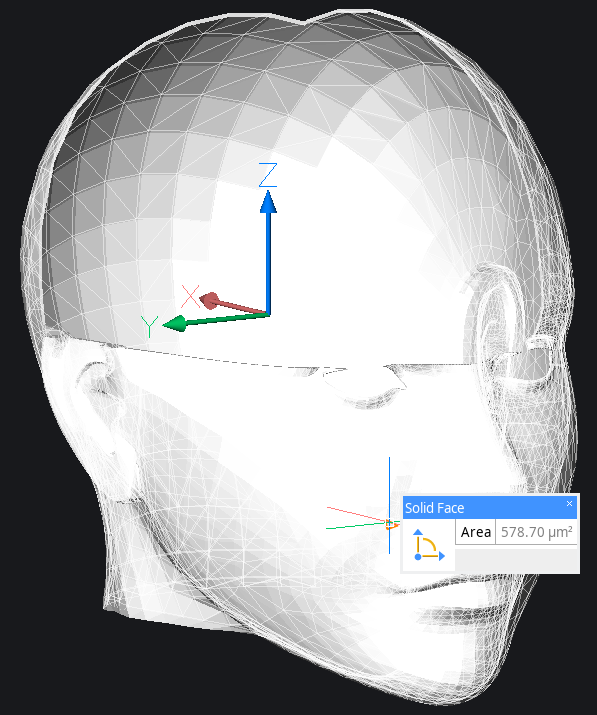
Those elements needs to interface with standard mechanical parts: structure, screws, ball-bearings, etc. in consequence, I had converted them to solid, allowing boolean operations between others (subtract operation visible in the picture above).
For converting a mesh to a solid in BricsCAD, I did:
1. Export the model as the standard 3D format .dae making sure it is triangulated water-tight and has less than about 20K triangles.
2. Import it from BricsCAD
3. Select the model and EXPLODE it, the result is a set of disconnected triangles
4. Select all the triangles (Ctrl+A) and convert all of them to regions: REGION. The result is that each triangle now is a region. This only works with triangles, not with polygons.
5. Join all triangles into a solid: Select all regions (Ctrl+a) and DMSTITCH. After a while, we get a body that can be edited into BricsCAD
The problem appear when I want to use a smoother model (more than approx. 20K triangles, which is still LOW-POLY), as in this case, DMSTITCH will refuse to work showing:
Too many entities selected
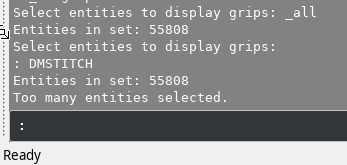
How to increase this limit?
The second problem is the huge amount of lines shown (white triangle edges in the top image): this make the screen over-crowded and it's difficult to work properly. Is there a way to avoid those lines to show? like telling the full body is a single curved face?
Thanks you and have a good day
Adrian
RELATED: https://forum.bricsys.com/discussion/21721/mesh-to-solid
Comments
-
I would suggest to avoid the conversion to Regions :
1. Convert the disconnected 3DFaces to Surfaces ( Planar BREPs ) using the commandCONVTOSURFACE
2. Convert the Surfaces to Solid3D using the commandDMSTITCHIf the error message is again generated, try to DMSTITCH 20000 surfaces and then the rest.....in successive steps
DMSTITCH creates in this way Surfaces (BREPs not water-tight ) and not 3DSolids.
You end up with 3 Surfaces (together forming a water-tight space) which can be stitched to a 3DSolid using DMSTITCH.of course you can try the same using the Regions in stitching them in steps to surfaces....and then to a solid
Your second question is rather a SHADEMODE issue ???? just clarify !
You can just use another rendering mode....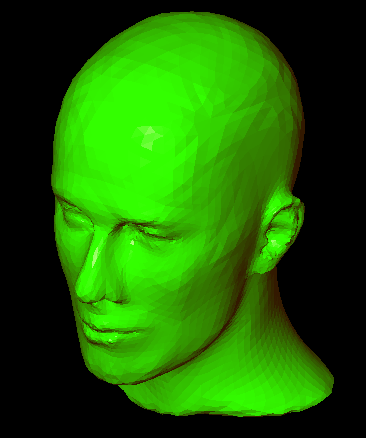 0
0 -
Hi :-)
After testing your approach, it seems that making DMSTITCH on groups of about 20K faces break the mesh:
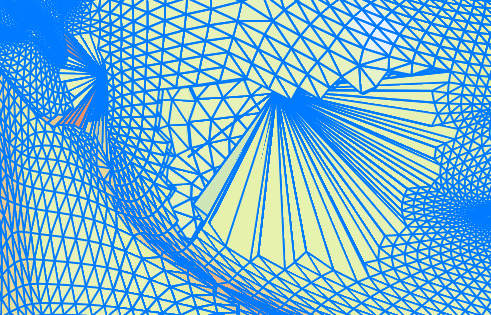
So I am still looking for a way to increase the DMSTITCH limit.
0 -
just send me your HEAD mesh in .DAE or .DWG format to test and experiment and eventually find a solution....!
0 -
-
i was able to produce a Surface (BREP) of the head mesh by gradually selecting 4000-6000 Faces (planar Surfaces) as described above.
Then i used DMSTITCH to create one Surface ! The mesh you sent is not water-tight and no 3Dsolid can be produced .
I can't attach the files due to big sizes >34 MB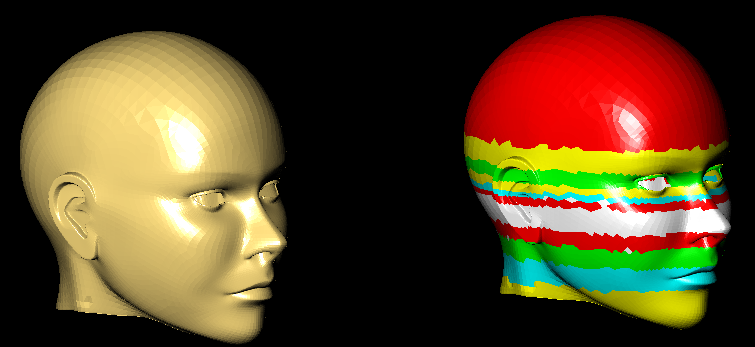 0
0 -
Hi :-)
Thank you for your great help, I will test this asap.
I tried yesterday and BricsCAD just crashed after a few layers, so I have not yet confirmation.
Aso, I can confirm the mesh is water-tight (I can create a solid from it low-poly version, FreeCAD is able to convert it to solid, and mesh analysis returns it is solid) I believe you don't get water-tight due to the issue I explain above: while creating surfaces, BricsCAD seems bugy and create artefacts in the mesh. It just means that those issues are not big enouth to be visible on your mesh.0 -
The fact that you created a solid from the mesh with Freecad does not mean that the mesh is water-tight,
it simply means that Freecad can somehow close the open mesh and produce a solid .
Bricscad DMSTITCH cannot do that to the best of my knowledge.
I have attached some screenshots for you to see the mesh you send in .DAE format imported in Bricscad as mesh entity.
I have drawn a red solid box and you see clearly the holes in the eyes and the neck of the face !
A mesh having holes is definitely not water-tight !
I have also seen the deformed areas after converting the mesh to a surface, look at the screenshots...0 -
The mesh is a skin model, which is double-sided: one "surface" is outside, and the other inside, enclosing a thin layer of 1-15mm thick skin. So for example, if you consider your picture 1, 2 and 3, the red block is obviously visible through eyes and the neck, but that does not imply it is not water-tight. It just means that the head has a "shell" holes for the eyes and neck.
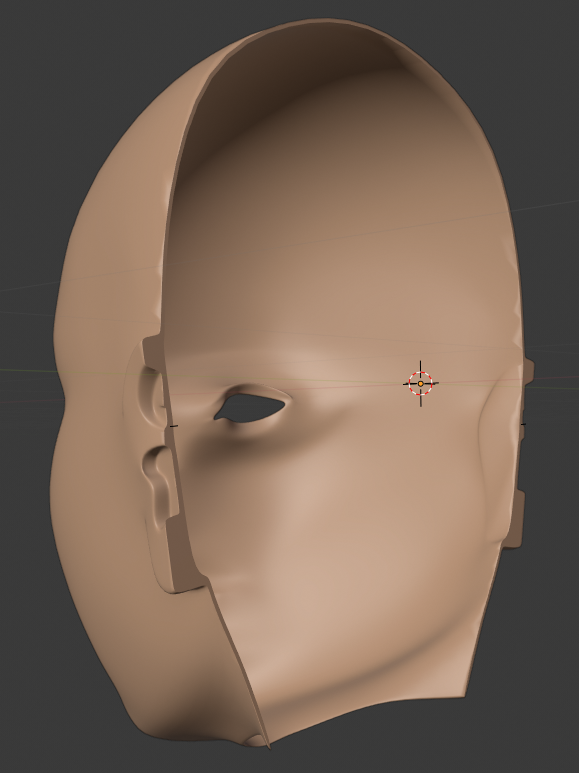
When importing the model into blender, the artefact shown in your image 4,5 and 6 are not visible, as you can see in the screenshot on blender (this is the mesh I downloaded from this forum page).
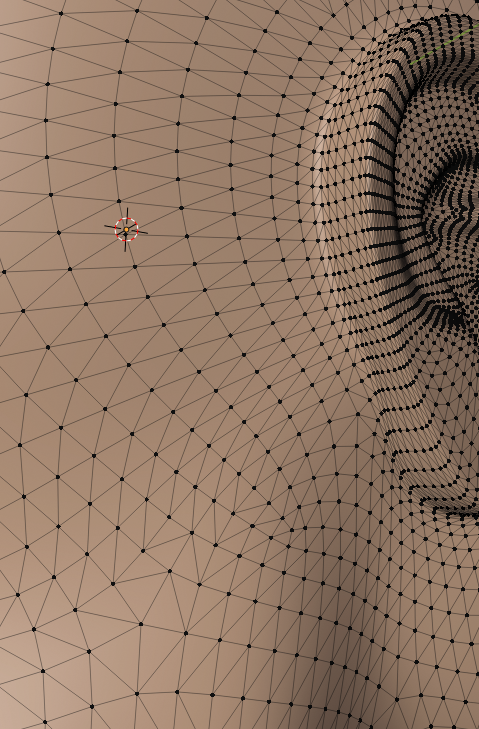
FreeCAD does not only allows to convert it to solid, it also provide a mesh-analysis tool, which indicate free vertices, or not water-tight meshes. Otherwise, when it is not water-tight, I cannot create solid of it in FreeCAD neither.
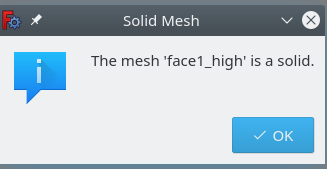
Finally, the low-poly version (same mesh, but with one level less of tessellation) can be converted to solid in BricsCAD.
The only conclusion, is that BricsCAD has a bug, which is probably only visible with tight mesh resolution, or high triangle number.
0
